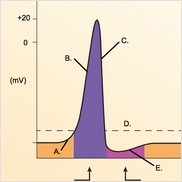Predict the effect of a 101°F fever on reaction rate
What will be an ideal response?
Increased temperature increases the kinetic energy of atoms involved in a chemical reaction. More forceful and effective collisions between atoms result in an increase in reaction rate.
You might also like to view...
What is a coenzyme?
A. A metal, such as zinc, that participates in enzymatic reactions B. Any ligand that binds to a specific site on a protein receptor C. An inorganic molecule that catalyzes enzymatic reactions D. A term regarding enzymatic reactions that is synonymous with "cofactor" E. An organic cofactor that directly participates as one of the substrates in an enzymatic reaction
Why is Calorie always spelled with a capital "C" ?
a) It is named after Dr. Calorie b) It is named for the country where it was discovered c) It is named after the province where it was discovered d) To distinguish it from the chemistry term calory e) None of these choices
The ________ interactions allow bone to be strong, somewhat flexible, and highly resistant to shattering
A) collagen-fiber B) protein-crystal C) mineral-crystal D) protein-protein E) hydroxyapatite-crystal
 The figure illustrates changes in the membrane potential during an action potential. What does "D" represent?
The figure illustrates changes in the membrane potential during an action potential. What does "D" represent?
A. Local potential B. Repolarization C. Afterpotential D. Depolarization E. Threshold